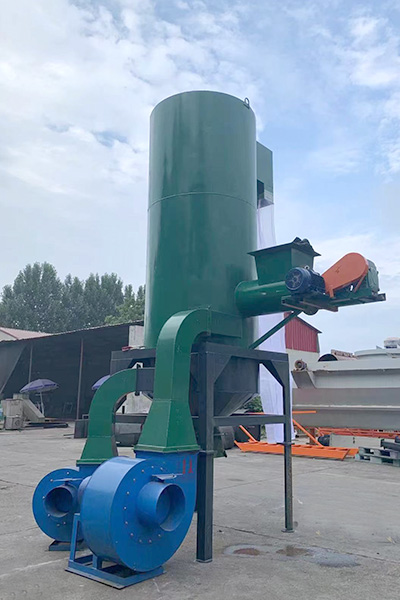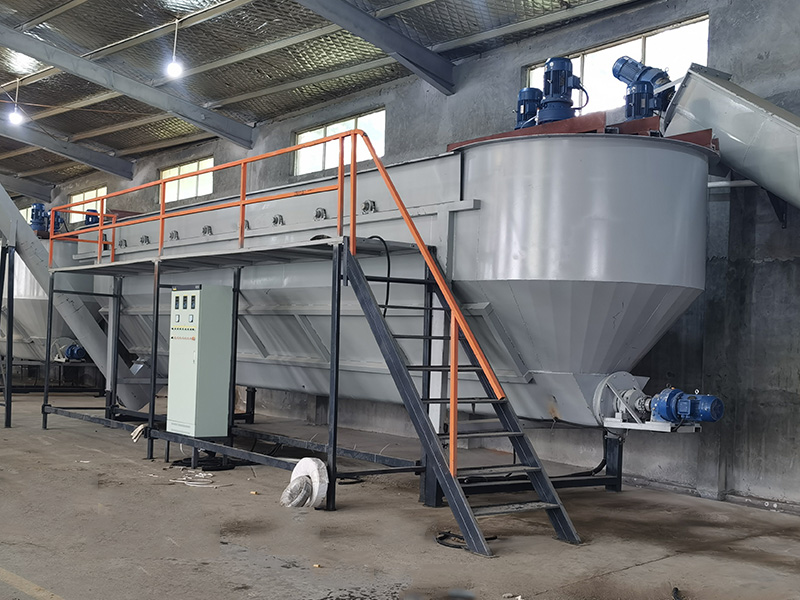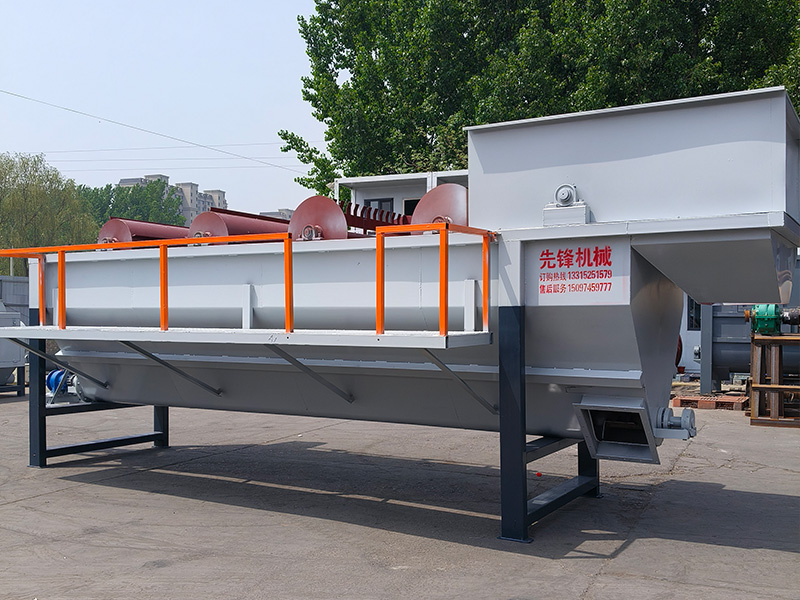How a Wind Sorter Can Revolutionize Your Manufacturing Process
How a Wind Sorter Can Revolutionize Your Manufacturing Process
Table of Contents
1. Introduction
2. Understanding Wind Sorters
3. Mechanics of Wind Sorting Technology
4. Benefits of Using Wind Sorters in Manufacturing
5. Applications of Wind Sorters in Various Industries
6. Challenges and Considerations
7. The Future of Wind Sorting Technology
8. Conclusion
9. FAQs
1. Introduct
Jul 14,2025

How a Wind Sorter Can Revolutionize Your Manufacturing Process
Table of Contents
- 1. Introduction
- 2. Understanding Wind Sorters
- 3. Mechanics of Wind Sorting Technology
- 4. Benefits of Using Wind Sorters in Manufacturing
- 5. Applications of Wind Sorters in Various Industries
- 6. Challenges and Considerations
- 7. The Future of Wind Sorting Technology
- 8. Conclusion
- 9. FAQs
1. Introduction
In today's competitive manufacturing landscape, **efficiency** and **innovation** are paramount. As industries continuously seek ways to optimize processes and minimize costs, wind sorting technology has emerged as a revolutionary solution. This article delves into how a **wind sorter** can dramatically enhance your manufacturing processes, improve product quality, and streamline operations.
2. Understanding Wind Sorters
A wind sorter, often referred to as a **air classifier**, is an advanced piece of machinery designed to separate materials based on their **density** and **weight** using airflow. This technology is particularly beneficial in the manufacturing sector, where diverse materials must be sorted efficiently and effectively. Unlike traditional sorting methods that rely on manual labor or mechanical means, wind sorting utilizes the principles of aerodynamics to achieve unparalleled precision.
What Makes Wind Sorters Unique?
Wind sorters leverage controlled air streams to separate lightweight materials from heavier ones. By adjusting the velocity and direction of the airflow, manufacturers can achieve different sorting outcomes tailored to their specific needs. This unique ability allows for greater flexibility in processing a variety of materials, from plastics and metals to organic compounds.
3. Mechanics of Wind Sorting Technology
Understanding the mechanics behind wind sorting technology is crucial for recognizing its benefits.
How Does Wind Sorting Work?
The wind sorting process begins with the feed material being introduced into the machine. The wind sorter employs a **fan** or **blower** to generate a consistent airflow that passes through the material. The separation occurs as lighter particles are lifted by the air, while heavier materials remain on the conveyor. This process can be finely tuned to achieve different separation criteria, making it highly adaptable for various manufacturing applications.
Key Components of a Wind Sorter
The primary components of a wind sorter include:
- **Airflow System**: Generates the necessary air movement for sorting.
- **Conveyor Belt**: Transports materials through the sorting process.
- **Collection Bins**: Collects sorted materials for further processing.
- **Control Panel**: Allows operators to adjust airflow and sorting parameters.
4. Benefits of Using Wind Sorters in Manufacturing
Integrating wind sorters into your manufacturing processes can yield numerous benefits, including:
Increased Efficiency
Wind sorters can process materials much faster than traditional manual sorting methods, leading to shorter production times and reduced labor costs.
Enhanced Product Quality
By accurately separating materials, wind sorters minimize contamination and ensure that only high-quality products move forward in the manufacturing process.
Reduced Waste
With precise sorting capabilities, manufacturers can significantly reduce waste, allowing them to recycle or repurpose materials that would otherwise be discarded.
Cost-Effectiveness
Although the initial investment in wind sorting technology may be considerable, the long-term savings in labor, waste management, and improved product quality can lead to substantial cost reductions.
5. Applications of Wind Sorters in Various Industries
Wind sorting technology has a wide range of applications across different manufacturing sectors, including:
Plastics Recycling
In the recycling industry, wind sorters efficiently separate different types of plastics, enhancing the quality of recycled materials and increasing overall recycling rates.
Agricultural Processing
Wind sorters can be used in agricultural settings to separate lighter organic materials from heavier debris, ensuring cleaner product output for food processing.
Metal Fabrication
In metallurgy, wind sorting technology can help in the efficient separation of metal shavings and scraps, optimizing recycling processes and minimizing waste.
Construction and Demolition
In the construction industry, wind sorters assist in separating materials from demolition sites, allowing for better resource recovery and management.
6. Challenges and Considerations
While wind sorting technology offers many advantages, there are certain challenges and considerations to keep in mind, such as:
Initial Investment Costs
The upfront costs associated with purchasing and installing wind sorting equipment can be significant. However, the long-term savings often justify this initial expenditure.
Space Requirements
Wind sorters require adequate space for installation and operation, which may pose challenges in facilities with limited space.
Maintenance and Upkeep
Regular maintenance is essential for ensuring optimal performance and longevity of wind sorters, necessitating a dedicated maintenance team.
7. The Future of Wind Sorting Technology
As technology continues to evolve, the future of wind sorting looks promising. Innovations in automation and machine learning are expected to enhance the efficiency and precision of wind sorters even further. Moreover, the growing emphasis on sustainability in manufacturing will likely drive increased adoption of wind sorting technology as businesses seek to reduce waste and improve recycling efforts.
8. Conclusion
In conclusion, **wind sorters** represent a groundbreaking advancement in manufacturing technology, offering significant benefits in efficiency, product quality, and waste reduction. By integrating this innovative machinery into your production processes, you can not only stay competitive but also contribute to a more sustainable manufacturing future. As industries continue to evolve, embracing technologies like wind sorting will be crucial for long-term success.
9. FAQs
Q1: What types of materials can be sorted using a wind sorter?
A1: Wind sorters can efficiently sort a wide variety of materials, including plastics, metals, organic materials, and more, based on their density and weight.
Q2: How does the cost of wind sorters compare to traditional sorting methods?
A2: While the initial investment for wind sorters may be higher, they often lead to significant long-term savings through increased efficiency and reduced waste.
Q3: What maintenance is required for wind sorters?
A3: Regular maintenance includes cleaning, checking airflow systems, and inspecting components to ensure optimal performance and longevity.
Q4: Can wind sorters be integrated with existing manufacturing lines?
A4: Yes, wind sorters can be tailored to fit into existing manufacturing processes, enhancing efficiency without requiring a complete overhaul.
Q5: Are there any limitations to using wind sorters?
A5: The main limitations include initial investment costs, space requirements, and the need for regular maintenance to ensure optimal performance.
TAG:
Contact Us
E-mail :
Phone/WhatsApp:
Address:
Shunping, Baoding City, Hebei Province









